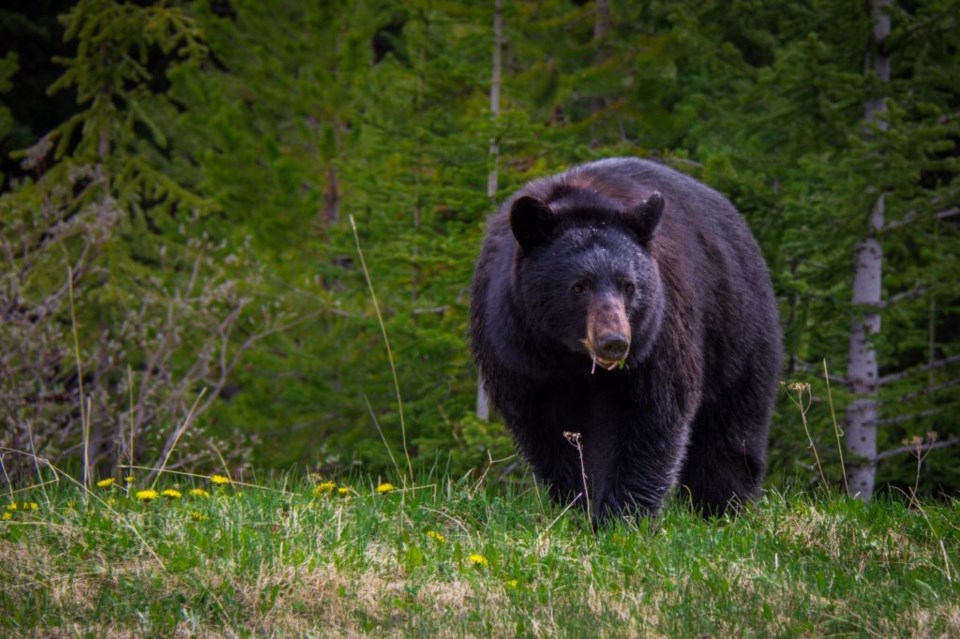
Peter Shokeir | [email protected]
Although Jasper National Park is full of wonders and recreation opportunities, the wild always has a dangerous side.
Black and grizzly bears are often sighted and can be encountered on roads, trails and the backcountry. While bears tend to avoid confrontations with people, they can be aggressive, especially when defending their cubs.
Thatâs why you should carry around bear spray while exploring the park.
Bear spray is a non-lethal deterrent that can repel bears in the event of a close encounter. It contains capsaicin, a chemical found in chili peppers, and comes within a spray canister that is small and portable.
The canister releases a cone-shaped cloud that can stretch to 10 metres at a speed of over 100 kilometres per hour.
The spray will sting bearâs eyes and skin and cause it to have difficulty breathing, and while the bear is not seriously hurt, the symptoms are unpleasant enough to chase it away.
Below are a few pointers on how to properly use bear spray and stay safe outdoors:
1) Avoid having to use it: Using bear spray is a last resort. The best way to stay safe and protect the animals is by avoiding encounters. Make noise (bear bells arenât enough), look for fresh bear signs, keep your dog on a leash, travel in tight groups of four or more, use officially marked trails and travel during daylight hours.
If you encounter a bear, try to calmly and slowly get out of its way first. If the bear comes towards you, yell âHey Bear!â If the bear acts aggressively and is less than a bus length away, that is when bear spray should be used.
2) Buy the right stuff: Make sure to check the expiry date and that the canister has a safety clip. It should also say âbear sprayâ or âbear repellent.â To be legal in Canada, the label must clearly show that it is intended for use on animals.
The typical canister is a 225-millilitre can (about 10 seconds worth) with 0.75-to-one per cent capsaicin. Visit Jasperâs many outdoor equipment stores to get your bear spray. If you are using older bear spray or borrowed some from a friend, check to see that it isnât expired.
3) Keep it readily accessible: You donât want to dig through your pack to get your spray when a bear is right in front of you. Carry the spray in a holster that can be easily reached with your dominant hand. Cyclists can put it in their bikeâs water bottle rack. Some outdoor shops may also have holster belts for sale.
4) Practice makes perfect: Users should spray a short burst outdoors to become familiar with the spray radius and their reaction time. Itâs also a good way to check that the can is working properly. Practice reaching for the spray and undoing the safety clip at least a few times.
Stores may have inert cans for practice. If you are using actual bear spray, make sure you arenât wasting it all on practice. And donât forget to read the instructions.
5) Storing bear spray: Donât store bear spray near heat sources, since it can explode if heated enough. Donât leave a canister in direct sunlight or vehicles either. Keep the spray away from items that could crush or puncture it. When driving, store the canisters in a travel container. Bear spray cannot be transported on commercial airlines.
6) Actually using it: Remove the safety clip and aim for the bearâs face. The goal is to create a wall of spray between you and the bear. Give quick, one-second bursts until the bear retreats. Leave the area immediately, since the bear could return to the scene later. Do not run, turn your back on the bear or try to chase the bear.
Ensure the nozzle is pointing away from you when spraying, and be careful not to get in the path of the spray. Wind or rain may reduce the sprayâs effectiveness. Try to have the wind at your back if possible.
Donât spray it on yourself, your tent or your gear like you would bug spray. Exposure may require first aid treatment or medical attention, while studies have shown that the lingering smell can actually attract bears. Check the label for health precautions.
Sources: Parks Canada and the Government of Alberta



